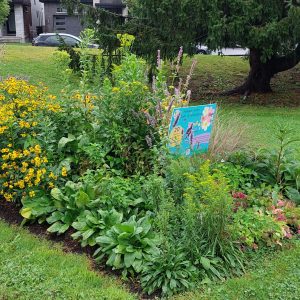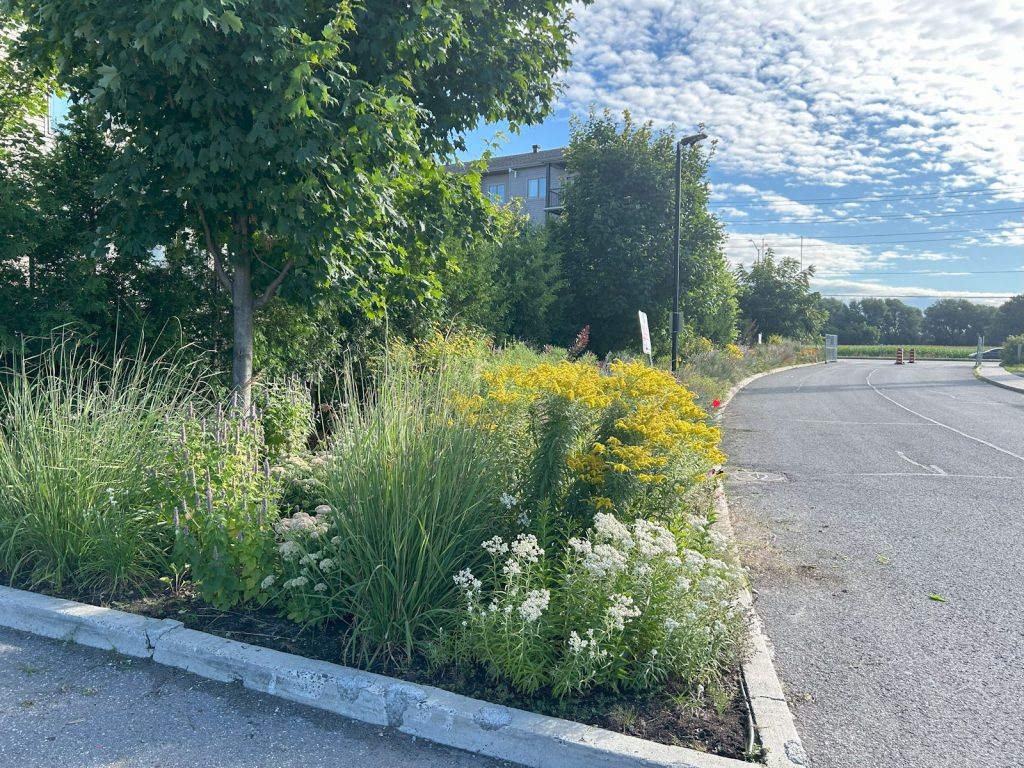Date: May 3rd, 2025
Time: 10 a.m. to noon
Where: All over the city
Save these dates!! WPP is back with another set of garden tours – or mini-colloquiums as they have become. We have a great variety of gardens to look at and talk about this season, terrific hosts to tell us about them, and sometimes researchers to talk about pollinators.
 All walks are on Saturdays from 10 a.m. to noon. Here’s a quick outline. Please watch for details to follow. These tours are free, but registration is required. In each case registration will open 2 weeks before the event. Stay tuned!
All walks are on Saturdays from 10 a.m. to noon. Here’s a quick outline. Please watch for details to follow. These tours are free, but registration is required. In each case registration will open 2 weeks before the event. Stay tuned!
May 3 – Jane’s Walk at the Fletcher Wildlife Garden
As has become our tradition, we’ll kick off the season with a Jane’s Walk at the FWG with a guided tour to look for pollinators and explore wildlife habitat and native plant gardening.
A project of the Ottawa Field-Naturalists’ Club, the FWG is now more than 30 years old. The idea was to create natural habitat typical of our area – a wetland, a meadow, old and new woods, a hedgerow – providing food, water, shelter, and places to live. Local wildlife quickly found homes there and our species lists grew. The garden holds an annual sale of wildflowers to share the success of the project and encourage all residents to attract butterflies, birds, and other creatures to their yards. REGISTRATION CLOSED
May 24 – Woodland flowers and hedgerows at the Corner Pollinator Garden
Eight years ago, Berit Erickson began adding native plants to her yard. At first, she had trouble finding early spring bloomers. She eventually figured out that trees and shrubs, and woodland flowers are the main sources of food for early pollinators. So Berit planted shrubby hedgerows around her yard, and added spring ephemerals to the existing shade gardens. Most recently, she created a backyard mini forest to add even more spring blooms. Come and see how you can support spring bees in your own yard. MORE
June 21 – Tapestry Garden boulevard planting
This boulevard garden is on a busy corner where the soil is poor. A fan of Doug Tallamy, Christine Edmonds saw an opportunity to make, not just a garden, but an ecosystem that would support all sorts of creatures. Gardening with native plants was a novel experience, but Christine’s skills as a designer were put to good use in this thriving garden.
July 12 – Sundaura Alford-Purvis’ abundant residential garden
This small, urban garden in the front and back yard is a blend of native and, mostly edible, introduced species. A bit of a jungle, this space is both an experimental garden, as Sundaura observes how various native species adapt to garden and urban settings, and a habitat for an increasingly abundant population of pollinators, especially native bumblebees.
July 26 – South Nepean Muslim Centre
At the SNMC, members have converted grassy parts of the landscape into pollinator friendly garden spaces with both Ontario native and non-invasive exotic plants to support ecological biodiversity. In 2021, volunteers established the first garden along the main entrance off Woodroffe Ave. In 2022, they turned a patch of waste space at the back of the property into a garden bed. The most recent project, in 2023, was converting a large parking lot median into a thriving garden of perennials and grasses. These gardens survive on rainfall and are hardly ever hand watered (except when new plants are installed). At the tour, we’ll hear about experience, challenges and lessons learned so far.
August 9 – Gully restoration planting at the Fletcher Wildlife Garden
In 2015, this part of the FWG was full of comfrey mixed with dog-strangling vine. That first summer, only a small patch was replaced with Joe Pye weed and swamp milkweed. Each year, more invasive species were replaced with moisture loving natives like swamp aster, culver’s root, flat-topped aster, blue flag iris, cardinal flower, bottle gentian, and many more. The gully and its slopes offer a wide variety of habitats, and the biodiversty of plants has increased followed by a variety of animal life: butterflies, bees, frogs, snakes, hummingbirds, and so on. Ten years on, the gully continues to be a haven for monarchs.
August 23 – Trillium Park community pollinator garden
This garden consists of 200 plants representing 20 native species. Its irregular polygon shape covers a gently rising berm parallel to both the nearby roadway and the paved pedestrian pathway that bisects the park. A QR provides more information about the plants in the garden.
September 6 – École élémentaire publique Trille des Bois
In spring 2023, a pollinator garden and a rain garden totalling 92 square metres were installed at this school with support from a City of Ottawa community environmental grant. Its more than 90 shrubs (8 species) and over 250 native wildflowers (25 species) attract numerous pollinators, other insects, and birds. The raingarden was a good choice for a problem area in the schoolyard where rain runoff was causing erosion and leaving mud on the sidewalk.
